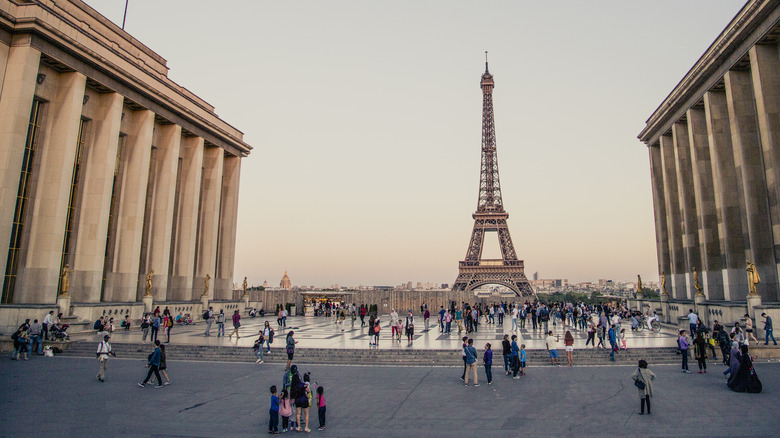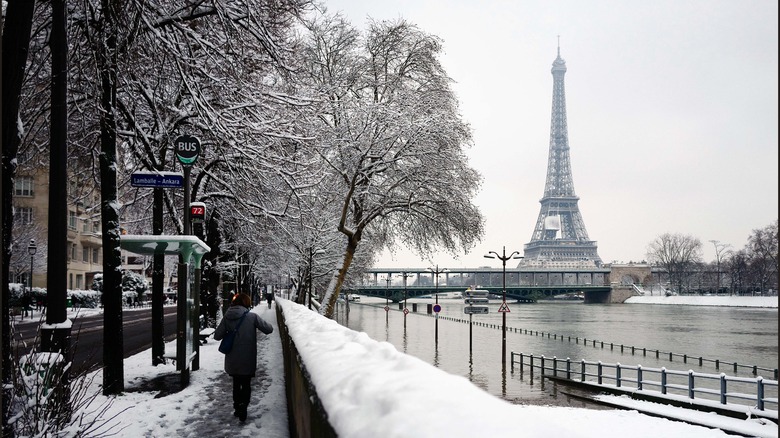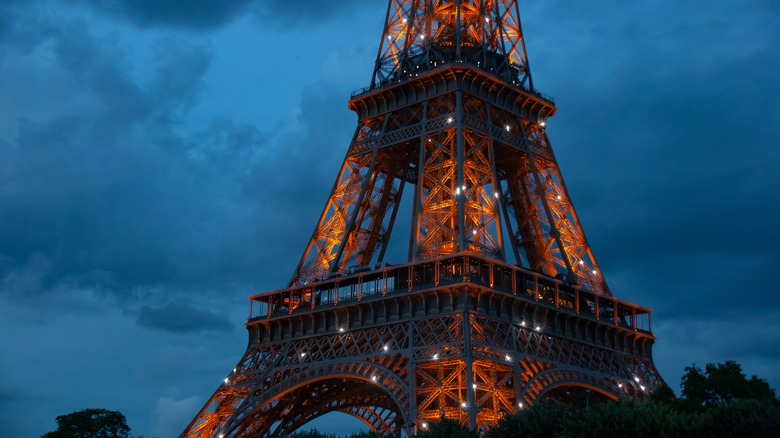The Best Times To Visit The Eiffel Tower To Avoid Crowds
It's not the controversial "Paris Syndrome" that's ruining vacationers' trips to the Eiffel Tower — it's other tourists. The Eiffel Tower is among the most visited tourist attractions, with nearly 7 million people traveling to the City of Love every year to see it. Considering just how many people want to see France's famous landmark, it's not surprising that it can be packed. For some visitors, waiting in line and fighting the crowds ruins the magic of the moment that they flew around the world to experience. While there's not exactly a quiet time at the Eiffel Tower, you'll generally have a much shorter wait and an easier time making your way through the crowds if you come after 8 p.m. in the middle of the week, especially in the off-season.
If your trip to Paris is already scheduled for a weekend in July when all the schoolchildren in Europe are on vacation and waiting in line to go to the Eiffel Tower's summit, your only hope is rain. While rain and fog might take away from the experience, a lot of other people aren't going to wait in line when the weather is bad, so if you're willing to brace yourself against the storm, you won't have to battle the crowds.
Visit the Eiffel Tower in the chilly weather
Paris is among the most popular cities to visit in the world, so there will always be some travelers in the city. However, the time of year that you visit has a big impact on how many other people will be waiting in line for the Eiffel Tower. Off-season for Paris is in the winter, though there is a slight spike in December. If you plan your trip for January, February, October, or November, you'll have an easier time getting reservations to the best restaurants in Paris, like Le Dôme, and have a shorter wait in line for attractions like the Paris Catacombs — and you might have a better chance at seeing the views from the Eiffel Tower summit without being blocked by crowds of tourists trying to snap a picture for their Instagram.
November, January, and February can be cold, with temperatures usually under 50°F, but your line is very likely to be shorter. Fortunately, February is usually pretty light on rain and snow, so your views from the top will be stellar, even if you have to wear a coat and scarf to enjoy them. If that's too cold for you, try October. While the official Eiffel Tower website reports that crowds are low in October, temperatures are more likely to be in the 40s-60s, giving you the best of both.
Lines are shorter on weeknights
No matter what time of year your trip to Paris is going to be, you're much more likely to be able to enjoy unobstructed views of the city and short wait times to get on the elevator to the tower's observation decks if you come at the right time of day on the right day of the week. If you have a few days in Paris, plan your trip to La tour Eiffel for the middle of the week to avoid the hassle. As long as it doesn't happen to be a school holiday, Tuesdays, Wednesdays, and Thursdays are usually the quietest days to visit the Eiffel Tower.
The Eiffel Tower is open all day, and a lot of people rush to the top in order to see clear views of the city in daylight, but Paris is known as the City of Light, and if you want to appreciate the glow coming from the city sprawled out below, a night visit to the tower is the perfect way to end a day of sightseeing. Best of all, if you head to the Eiffel Tower after 8 p.m., lines are likely to be significantly shorter than in the morning or afternoon.


